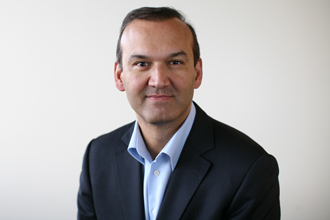Tracking global health improvements with new low-cost and reproducible method

By Françoise Makanda, Communications Officer at Dalla Lana School of Public Health

Dr. Prabhat Jha
Getting a snapshot of a country’s health statistics can be as easy as examining simple causes of death and disability surveys with open-source data. Best of all, the method is low cost and reproducible.
Dr. Prabhat Jha, director of the Centre for Global Health Research at St. Michael’s Hospital and professor of Epidemiology at the Dalla Lana School of Public Health (DLSPH), did just that with his National Burden Estimates (NBE) method. It combines open-source data from the United Nations (UN), the World Health Organization (WHO) and data from his Million Death Study in India. He published the methodology in The Lancet Global Health journal.
“The National Burden Estimates method is a simple way to enable every country to determine their local burden of disease, what’s killing people and what’s disabling them,” says Dr. Jha, who is the lead investigator of India’s Million Death Study.
The UN’s Population Division has death counts and estimates for every country in an open dataset. The WHO’s Global Health Estimates has data on the relationship between every death and how much disability occurs. In turn, the NBE method works for countries which are obtaining simple, but representative, local data estimates of deaths.
With NBE, Dr. Jha and co-authors observed that death by suicide was common in southern India. Young adults are taking their lives at an alarming rate compared to the north; a previous Million Death Study paper corroborated these results. Other findings demonstrated that cancers were more concentrated in the north. Disability rates—also known as DALYs—in rural areas were at least twice those of urban areas for chronic respiratory disease, diarrhea and fevers of unknown origins.
The NBE method offers a solution — a new GPS-type process that provides countries with a transparent path to improving health. It also allows governments to prioritize public health programming efficiently and take ownership of health statistics.
“If you can get India right, which is one-sixth of the humanity, you’re off to a reasonable start,” says Dr. Jha.
The UN’s third Sustainable Development Goal seeks to advance good health and well-being, yet very few countries have the resources to meet this goal. Many countries are often too strapped for resources to measure death statistics. Many are still taking data from larger countries like the United States, a tactic Dr. Jha says can be misleading.
Although he is pleased with the results he obtained with lead author Dr. Geetha Menon, a professor at the University of Alberta, the next Statistical Alliance for Vital Events (SAVE-QES) Summer Institute led by the DLSPH in June 2020 will put the method to a test. A key goal of SAVE-QES is to expand the global understanding of mortality statistics and their uses. It also aims to accelerate the introduction of novel, low-cost mortality monitoring systems and expand the use of existing mortality data systems.
Dr. Jha and SAVE-QES program co-lead, Prof. Erica Di Ruggiero, will be leading a group of researchers from different countries on a week-long training collaboration at DLSPH to use the NBE method for their host countries. Should the collaboration be successful, Dr. Jha and Dr. Di Ruggiero would like countries to use the method over time to track their progress. This is a part of an overall strategy that will allow DLSPH and St. Michael’s to have greater impact on a global scale.
The QES Program is managed through a unique partnership between Universities Canada, the Rideau Hall Foundation, Community Foundations of Canada and Canadian universities. It is made possible with financial support from the International Development Research Centre and the Social Sciences and Humanities Research Council.
About St. Michael’s Hospital
St. Michael’s Hospital provides compassionate care to all who enter its doors. The hospital also provides outstanding medical education to future health care professionals in more than 27 academic disciplines. Critical care and trauma, heart disease, neurosurgery, diabetes, cancer care, care of the homeless and global health are among the Hospital’s recognized areas of expertise. Through the Keenan Research Centre and the Li Ka Shing International Healthcare Education Centre, which make up the Li Ka Shing Knowledge Institute, research and education at St. Michael’s Hospital are recognized and make an impact around the world. Founded in 1892, the hospital is fully affiliated with the University of Toronto.
About Unity Health Toronto
Unity Health Toronto, comprised of Providence Healthcare, St. Joseph’s Health Centre and St. Michael’s Hospital, works to advance the health of everyone in our urban communities and beyond. Our health network serves patients, residents and clients across the full spectrum of care, spanning primary care, secondary community care, tertiary and quaternary care services to post-acute through rehabilitation, palliative care and long-term care, while investing in world-class research and education. For more information, visit www.unityhealth.to.
